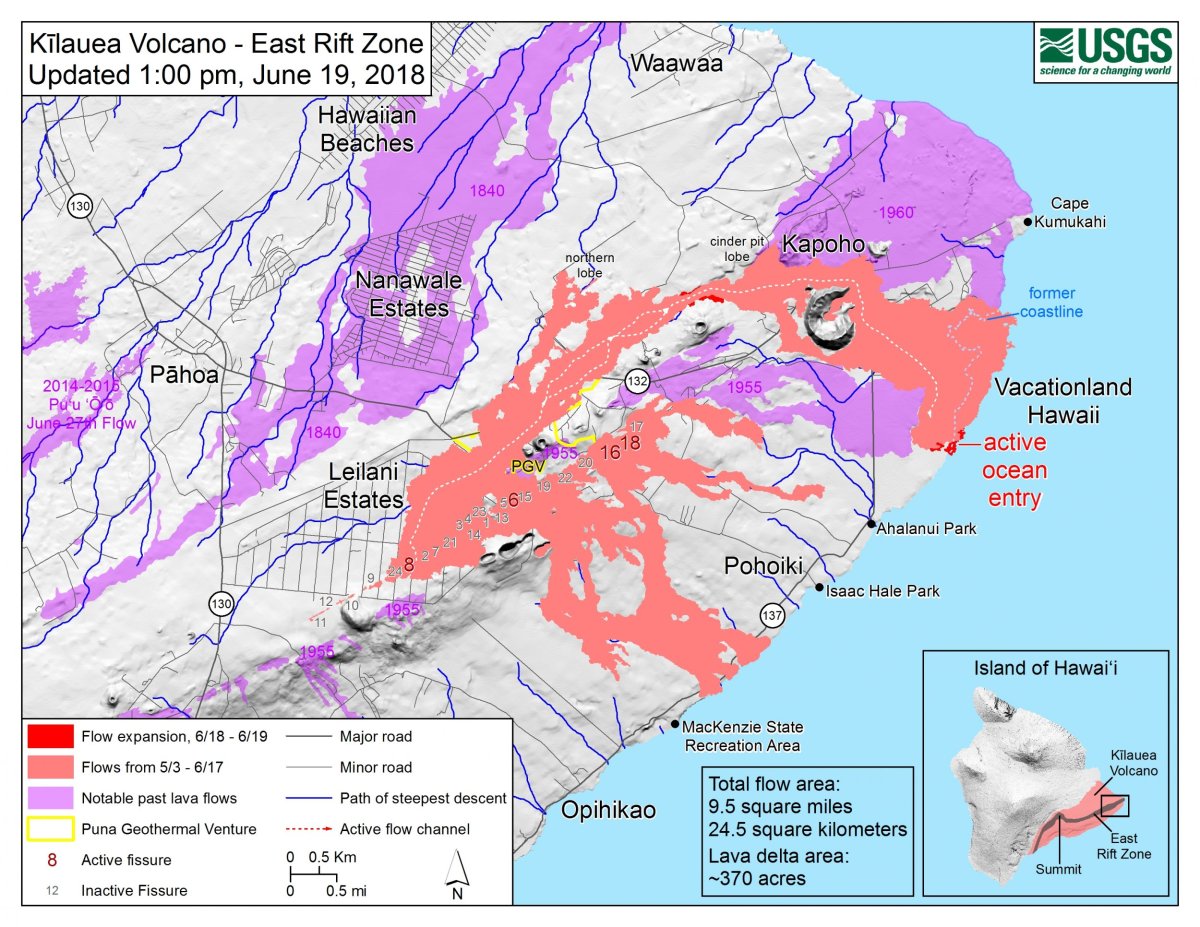It's been more than a month since Kilauea erupted on Hawaii's Big Island—but threats from the volcano still loom. The region is still contending with lava flows, earthquakes, explosions and volcanic gas. Since the initial eruption May 3, homes have been destroyed and lives irreversibly changed on the island.
On Tuesday afternoon, an earthquake that occurred on the south side of Kilauea prompted concerns about a possible tsunami. The Pacific Tsunami Warning Center, however, said the 4.4 magnitude quake wasn't strong enough to cause a tsunami.
A second seismic event happened early Wednesday morning in Hawaii around 4:30 a.m. HDT. It was likely an explosion near the volcano's summit, according to a notice from the PTWC. The United States Geological Survey tweeted that it was a "gas and ash emission from a collapse event."
This event caused a small plume of volcanic ash to spew into the sky, that was then blown downwind. Again, the PTWC said that the event did not cause any tsunami activity.
In addition to the eruptions and earthquakes, the highly active Fissure 8 on the island was still causing a strong flow of lava, spreading into the ocean at more than one point and fountaining more than 150 feet in the air.
#Kilauea #Fissure8 cinder and #spattercone grows as eruption vigor increased today. Standing waves visible in channel that moves 7.7 m/s (17 mph) near vent. #Lava channel feeding overflows in several spots - creating slow-moving #pahoehoe lava flows. #Oceanentry in two locations. pic.twitter.com/cwJwjVBb8n
— USGS Volcanoes🌋 (@USGSVolcanoes) June 20, 2018
But Fissure 8 was no longer the only one releasing the lava. As of Tuesday, there were two more fissures—6, 15 and 16—that were releasing lava and steam. Fissure 6 was "oozing," while Fissure 15 was releasing the lava in a "mild spattering," the Hawaii Civil Defense Agency message said. The USGS said these fissures were "periodically" emitting lava.

Wind was also playing a factor in the safety of those on the island. The winds blowing Tuesday through Thursday on the island were directing the emissions from the volcano's activity into the interior part of the island. Those emissions included the volcanic fog—known as vog—that appears after an eruption and can include dangerous sulfur dioxide. Sulfur dioxide can cause respiratory problems along with skin, eye, nose and throat irritation for those exposed to it.
Residents in the area are urged not to go near the dangerous plumes, fissures or the areas where the lava is entering the ocean. Downwind of Fissure 8 there is volcanic glass, known as Pele's Hair, falling that people in the area should look out for.
SaveSave
Uncommon Knowledge
Newsweek is committed to challenging conventional wisdom and finding connections in the search for common ground.
Newsweek is committed to challenging conventional wisdom and finding connections in the search for common ground.
About the writer
Nina was a breaking news reporter. She previously worked at Business Insider, The Boston Globe, and Boston.com.
To read how Newsweek uses AI as a newsroom tool, Click here.








